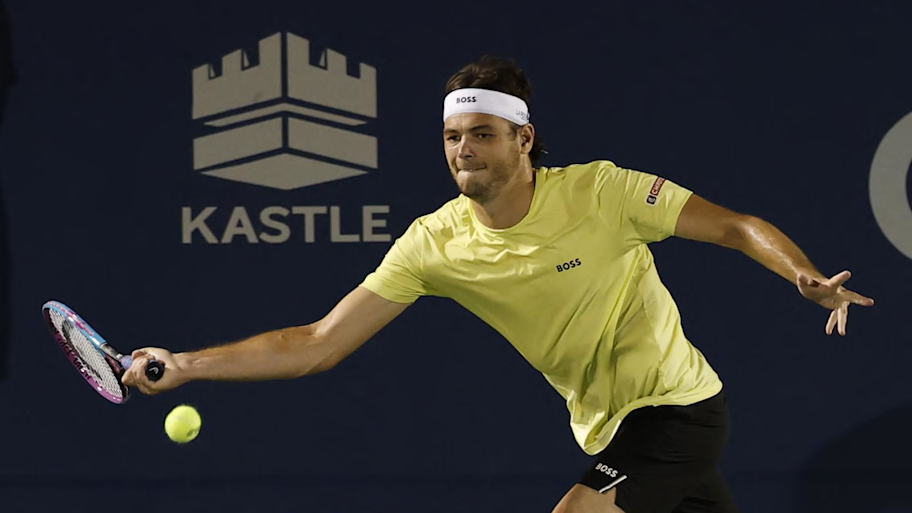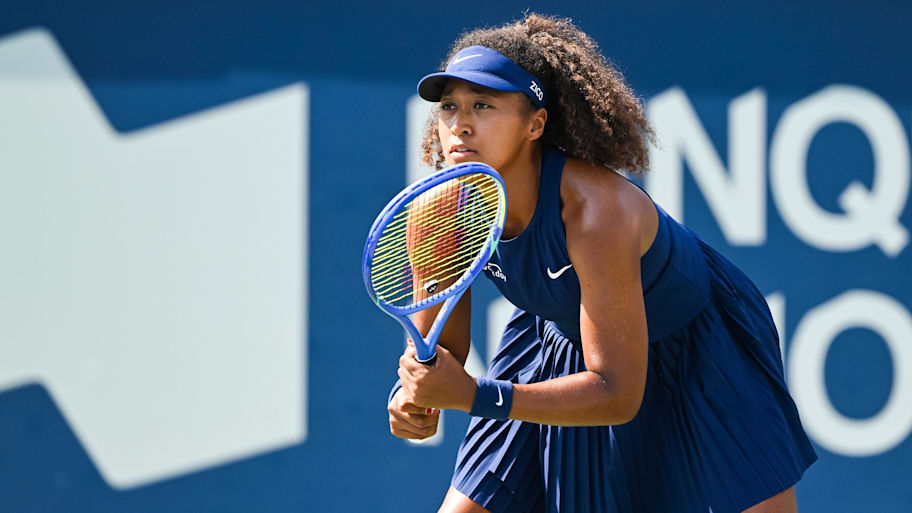Submissions have been lightly edited for brevity and clarity.
Hey, everyone …
- Here’s this week’s Served podcast with special guest Iga Świątek:
- For those attending the Cincinnati Open.
- Good soldiering I: Tennis Channel is all over Canada and Cincinnati coverage, starting with pregame shows at 10:30 a.m. ET.
- Good soldiering II: Here’s a 60 Minutes piece from Sunday about death flights in Argentina.
On a long and lonesome highway, east of Omaha …
Jon, where does Naomi Osaka go from here?
Steve, Calif.
• We talked about this both on Tennis Channel and on Served. Osaka, of course, announced that she had parted ways with coach Patrick Mouratoglou on Sunday. They began their partnership around the time of last year’s U.S. Open, and while Osaka has played some high-level ball at times, the signature wins have just not come. After losing to Emma Raducanu the other day in Washington, D.C.—a match at which Mouratoglou was not present—Osaka, now No. 49, fell to 21–11 on the year.
It’s not a horrible record. But consider the source of the wins, and how few of them came against top-20 opponents. Consider the close matches she has lost. Consider that she is a four-time major champion who isn’t playing—at 27; with a child; with no financial urgency—to make third-round appearances.
We noted on Served that Mouratoglou seemed to do little to fatten her confidence. And Osaka is now working through the hard court swing with Tomasz Wiktorowski, longtime coach of Świątek and also coach of Agnieszka Radwanska, who was one represented by Osaka’s agent, Stu Duguid.
Fun fact: Heading into this week’s play, Osaka had 200 aces in 27 matches. Aryna Sabalenka had 197 in 56 matches. What does this tell us? Not a ton. Yes, this is our obsession here: We need to normalize this for the length of the match and for the quality of the opponent. Sabalenka is likely playing shorter matches than Osaka, and thus has fewer service games. And, in theory, more matches mean you’re playing better opponents, so one would expect the ace count to drop as a player goes deeper in a tournament. But, it does indicate that Osaka’s serve is not the problem. Her new coach can work on her tactics, confidence and movement, etc., but he should know there’s a lot of starter power here. And speaking of data …
Jon, with [Novak] Djokovic having achieved his centurion ATP Tour-level singles title at Geneva earlier this season, there is some talk about the narrowing gap between Nole’s 100 titles and [Roger] Federer’s 103 ATP Tour-level singles titles. While Federer has more Tour titles than Djokovic, and while Djokovic may not reach or surpass the 103-title benchmark, I think it’s worthwhile to look at the qualitative side of their respective Tour-level titles. Perhaps we call this the “Tournament Quality Index” (“TQI”). Here is a representation of the number of Tour-level singles titles for each player, with a points attribution that equates to the ATP Ranking Points granted to the singles winner, but with one assumption: while the Olympic singles tournament does count as an official Tour-level title, it does not offer ATP ranking points; I have attributed 1,500 points for an Olympic singles gold medal, which is the equivalent ranking points awarded for an undefeated winner of the ATP World Tour Finals.
The above Tour-level titles leave (i) Djokovic with a TQI of 110,500 and (ii) Federer with a TQI of 95,250. Curious on any thoughts you have on TQI®.
Jeff, Brooklyn, NY
• Well done. The more granular the statistics and data, the better. For the past few years, it’s gotten even harder (impossible?) to make a good-faith empirical case that Djokovic is not the GOAT. (Does someone want to run these for Rafael Nadal?)
I would still like to see more data on the quality of the opponent. Note how many Slam-less opponents Federer, Nadal and Djokovic, respectively, beat in major finals. (Note that Djokovic beat Carlos Alcaraz to win his Olympic gold medal.) At some level, yes, you can only beat the opponent the draw asks you to face. But, too often, we overlook the player on the other side of the net (and overall context) when throwing out numbers.
Hi Jon—love the mailbag. Please keep it coming!
I spent most of the last, scorching week at the Citi Open in D.C. There was some wonderful tennis but two things stood out to me:
1) I’d like to give Taylor Fritz a big shout-out. I’ve never been the biggest fan of his, but in a week of sitting pretty close to courtside he was the ONLY person, male or female, whom I saw thank the ball folks when he gave them back his yucky used towels. I don’t know what the protocol is, but surely it should be to thank the people who have to handle your sweaty towels?
2) And, speaking of sweaty—the weather in D.C. last week was brutal. I suspect it’s going to be pretty bad in Montreal, Toronto, Cincinnati and maybe even late August New York. I know the point of the summer hard court season is to prep for the U.S. Open, but is there any sense that climate change may require a schedule change?
Thanks—and thanks for the podcasts too.
Elise Rabekoff
• 1) He was raised right, that Taylor Fritz. Shout-out indeed. I remember taking a friend to a match years ago, and James Blake quickly became the guy who always said thank you to the ballkids. We could go on a rant about why anyone—even polite players—needs to handle “yucky used towels.” But we’ll save it.
2) Amen. I was in D.C. last week (for nontennis work) and the combination of the heat and humidity was absolutely oppressive. Like, kiln-oven heat. Like, scary hot. And, as long as the planet ain’t getting cooler, tennis must address this. There are solutions here. In Acapulco, Mexico, there are sometimes only night sessions. But, tennis vs. the climate is a storyline to follow going forward. A point to bear in mind: we’re not just talking about supremely conditioned athletes, but officials, ballkids and, oh yeah, fans, must also confront this.

Hi Jon,
You seem to throw shade at the PTPA. I’m sure some is warranted but is the glacial pace of player reforms forcing the long-lever of legal action to move the entrenched, hydra-headed governance? When will 14% revenue sharing no longer be deemed acceptable in today’s multi-billion dollar sports world? In a non-unionized sport what other options do the players have? Can you finagle a Reilly Opelka interview or invite him in the podcast to suss this out?
Thanks, Lance
• A few thoughts. I am not throwing shade at the PTPA so much as I am throwing shade at this lawsuit. It’s sloppy and full of contradictions and circular reasoning. (The ATP and WTA are cartels, yet the majors are the biggest source of player revenue?) For all its explosive charges, it lacks a better alternative. The absence of top and other credible players—starting with, but not limited to, Djokovic—is, at a minimum, problematic.
This has the stench of desperation: I’m not gonna be ignored. The Tours aren’t going to return phone calls, much less give us a seat at the table? Fine, we’re going to file a sweeping lawsuit—one that doesn’t offer any helpful solutions, throwing around words like “conspiracy” and “cartel,” citing every possible grievance. And after spending ten or twenty of fifty million dollars, maybe we’ll get somewhere.
Part of the frustration? Fundamentally, the PTPA is correct. The players should receive more revenue and benefits and have a louder voice. Fundamentally, the players should act collectively. But this lawsuit isn’t it. Don’t take our word for it. Good luck finding a sports lawyer unconnected to the case who thinks this has merit. More critically, note the silence of other players. Half the top 10 are meeting with the majors on the side, asking for much the same increases. Why? Because they want to see the majors, in particular, pay a higher share of revenue, but want nothing to do with this charade.
Your point about the glacial pace is an important one. Time is among the biggest inherent advantages of “management,” i.e., the establishment. Wimbledon ain’t going anywhere. Jessica Pegula, to pick a name, is. What do I mean? Players’ careers are finite, if not altogether short. New stars and players come along. Passion dulls. Voices quiet. Historically, the tours, majors and other tournaments know they can simply stall and run out the clock.
Jon you and others keep going on about the extended Masters Series events and talk about the mental health toll. Give me a break. Players get paid millions of dollars to play a sport. Now there is more money and more opportunity (with bigger draws). What am I missing?
Carol T.
• Tell us you’ve never spent time in an off-the-exit-ramp hotel without saying you’ve never spent time in an off-the-exit-ramp hotel.
Shots
• For the Chicago crowd, here’s Billie Jean King on the boards.
More Tennis on Sports Illustrated
This article was originally published on www.si.com as Tennis Mailbag: Where Naomi Osaka Goes From Here.
